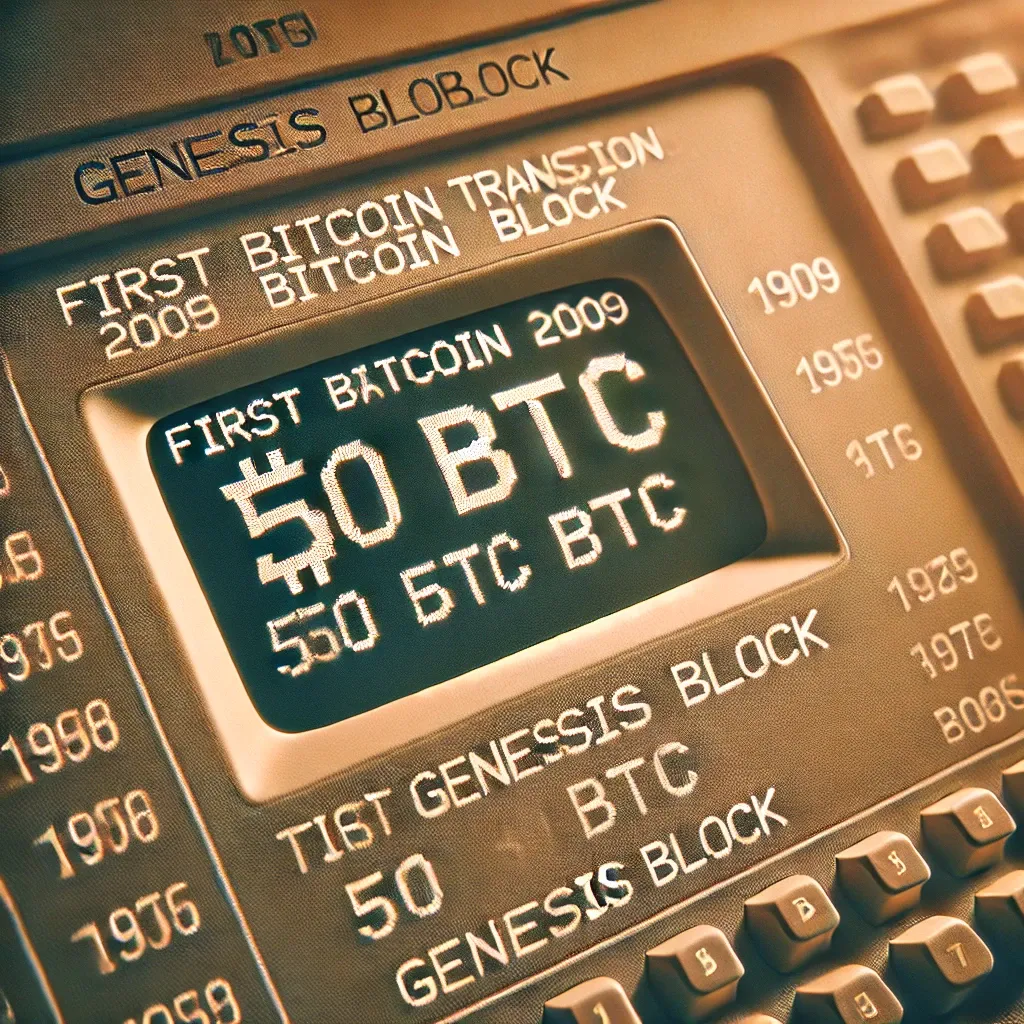Bitcoin, a term that now dominates headlines around the world, had its humble beginnings in 2009. It was a year that marked the dawn of a new era in digital currency, offering an alternative to traditional financial systems. While its value and relevance have soared over the years, the Bitcoin of 2009 was an entirely different entity, one that few could have predicted would shape the future of finance. In this article, we will explore Bitcoin’s price, wallet, and key moments from the transformative year of 2009.What was the Bitcoin 2009 course? How did the market behave?
Did you know that Bitcoin’s first year was marked by minimal value? Discover the 2009 Bitcoin price, wallets, and how this digital currency started its journey toward global recognition.
Bitcoin 2009 Course: How It All Began
When Bitcoin first emerged in 2009, it was largely an unknown entity. Created by the pseudonymous Satoshi Nakamoto, the cryptocurrency was revolutionary in concept but hardly noticed by the mainstream. It began as an open-source project with a radical goal: to decentralize money, cutting out central banks and intermediaries. The course of Bitcoin in 2009 was marked by a slow and steady development, as miners started to unlock new blocks, each of them earning 50 BTC in the process.Despite the grand ambitions of Nakamoto, Bitcoin in 2009 had no price as we would understand it today. The market for Bitcoin was effectively nonexistent. This was before exchanges, before traders, and even before the first real-world Bitcoin transactions took place.Some significant moments of Bitcoin’s early days include:
- January 3, 2009: The Bitcoin network came to life with the mining of the Genesis Block, the first block on the Bitcoin blockchain.
- January 12, 2009: Satoshi Nakamoto sent 10 BTC to computer scientist Hal Finney in what is believed to be the first Bitcoin transaction.
- May 22, 2010: Bitcoin’s first commercial transaction occurred when Laszlo Hanyecz purchased two pizzas for 10,000 BTC. This moment is now famously referred to as “Bitcoin Pizza Day.”
However, back in 2009, Bitcoin had no real value, and its price was only defined by the miners who exchanged computing power for Bitcoin rewards. The currency’s initial price could be considered “priceless,” as it wasn’t being traded or used for purchasing goods.
👉 Explore more about Bitcoin’s early course 👈
Bitcoin 2009 Wallet: Storing a New Asset
In 2009, Bitcoin wallets were quite basic and simple compared to the sophisticated solutions we see today. Since Bitcoin had no price or demand at the time, wallets were primarily used for experimentation and curiosity. The first wallets were software-based and could be installed on personal computers.A Bitcoin wallet stores a private key that enables the holder to sign transactions and claim ownership of their coins. The early Bitcoin wallet clients were designed to be simple, and although they were secure, they lacked many of the features seen in modern wallets. Notably:
- Bitcoin-Qt: Released in 2009, Bitcoin-Qt was the first full-node client and the official wallet software of Bitcoin.
- Private Key Management: Users had full control over their private keys, meaning the responsibility for securing their funds was entirely on them.
- Backup and Recovery: There were no cloud-based backups, so users needed to store their wallet.dat files carefully, or risk losing their Bitcoins forever.
- Simplicity over Features: Features like multi-signature support or hardware wallet integration didn’t exist. It was a time of basic storage solutions.
- Peer-to-Peer Transactions: Bitcoin in 2009 was traded directly between users through the Bitcoin network, with no intermediaries or exchanges involved.
As time went on, wallets became more accessible, evolving into mobile apps and web-based solutions. But back in 2009, these early wallets were pivotal in the development of a decentralized financial system.
👉 Learn more about early Bitcoin wallets 👈
Bitcoin 2009 Price: A Different Reality
In 2009, Bitcoin’s price was almost non-existent in the way we think of cryptocurrencies today. The idea of valuing Bitcoin was foreign since no one had yet given it an economic use case. Bitcoin’s price was essentially “free” in the sense that it had no real-world exchange value at the time. Early adopters mined Bitcoin purely as a technical experiment and did not expect immediate financial rewards.A few months into its existence, there were attempts to gauge Bitcoin’s value. For example, when a user posted an offer to buy two pizzas for 10,000 BTC in May 2010, the exchange rate was implied to be around $0.0025 per Bitcoin. But even then, Bitcoin was far from a traded asset with any official pricing.The evolution of Bitcoin’s price throughout 2009 can be summarized by these milestones:
- Early 2009: Bitcoin had no official exchange price.
- Mid-2009: Bitcoin was traded between individuals on online forums, but its value was negligible.
- Late 2009: Bitcoin began to gain attention in niche circles, and its price started to be valued at fractions of a cent per coin.
By the end of 2009, Bitcoin’s price was still negligible, with a small community of users and enthusiasts beginning to show interest in its potential.
👉 Discover the price evolution of Bitcoin over the years 👈
Conclusion
The year 2009 was a pivotal one for Bitcoin, as it set the foundation for what would eventually become a global financial phenomenon. Despite having little-to-no value and minimal adoption, the events of 2009 paved the way for the digital currency revolution.Bitcoin’s price, wallet technology, and overall course in 2009 serve as a reminder of how far this digital asset has come. Today, Bitcoin is not only an alternative form of payment but a store of value for millions of people worldwide. The lessons from its earliest days, full of uncertainty and experimentation, continue to shape the crypto space today.
“The future is already here — it’s just not very evenly distributed.” — William GibsonBitcoin’s journey from 2009 is a testament to the power of innovation and the long-term potential of decentralized technologies. As we look ahead, it’s clear that the lessons learned from Bitcoin’s early days will continue to influence the development of blockchain and cryptocurrencies for years to come.






